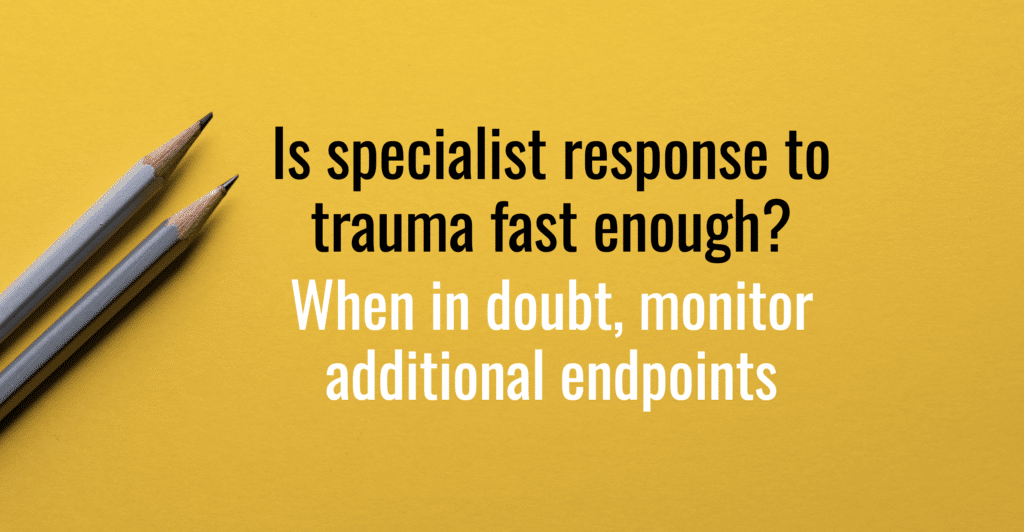The 2022 revision of Resources for Optimal Care of the Injured Patient from the American College of Surgeons (ACS) includes new response time requirements for neurosurgeons, orthopedic surgeons and interventional radiologists.
By definition, trauma centers that meet these response times are in compliance with the ACS requirements. And yet, technical compliance with the standards does not necessarily equal patient safety.
How do you make sure your trauma program is not just checking a box but actually doing right by the patient?
Recently, leaders at a Level II trauma center faced this question with regard to their neurosurgeon response plan. Although they knew their system would be compliant with the wording of Standard 5.17, they still wanted to make sure patients in need of a neuro evaluation were receiving a timely specialist response. Their solution was to verify patient safety by monitoring additional endpoints.
Looking at the bigger picture
The trauma center, which was located in a rural area, had significant difficulty hiring neurosurgeons. According to one of the trauma program’s leaders, the only way the center could secure neurosurgery coverage was to agree that the specialists could live in a community 30 minutes away from the hospital.
Trauma program management believed this arrangement was acceptable under the strict wording of Standard 5.17, since “neurosurgical evaluation” can start with the initial review of imaging. The neurosurgeon can conduct his or her evaluation at home within the 30-minute response threshold and, if needed, be at bedside within 40 minutes of request.
However, although this timeline was technically compliant with the standard, program management still wanted to ensure they were doing right by patients. As the program leader explained, “If the overall goal is to improve patient outcomes, we decided to look at the bigger picture.”
To get a big-picture view of performance, the trauma program chose to monitor the time interval from neurosurgical consult request to OR start time. As a goal, they selected a target of 60 minutes, which seemed reasonable based on the parallel standard for hemorrhage control.
“We found that the neurosurgeon who was chronically beyond a 30-minute bedside time was efficient at starting surgery within 60 minutes of request,” the program leader explained. “At that point, we felt we could argue that our PI monitoring was enhanced to ensure optimal care and confirmed that patient care was not suffering due to delayed surgeon presentation.”
The same quality strategy can be applied to any trauma process or care protocol. Monitoring additional endpoints allows trauma program leaders to gain a full-spectrum view of quality and patient safety.
More practical strategies
More practical strategies for ensuring a timely specialist response are available in the new white paper:
Streamlining and Documenting the Specialist Response to Trauma
This digital white paper includes tools and resources that can help trauma program leaders design, implement and monitor effective specialty response processes:
- A summary of key changes to the ACS specialist response standards
- PI-driven strategies for improving documentation of response times
- An approach to identifying the hidden causes of poor compliance
- Simple backup systems for ensuring specialist response documentation
This white paper is sponsored by Viz.ai, developer of Viz Trauma Suite. To view the white paper immediately, click below:

